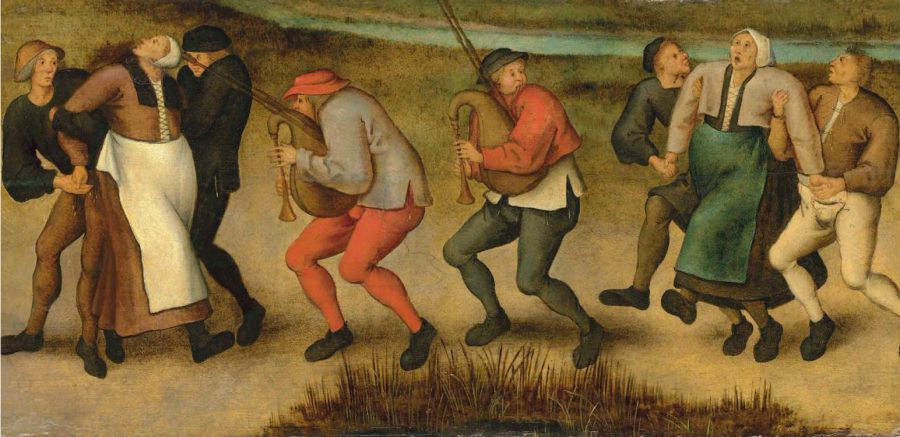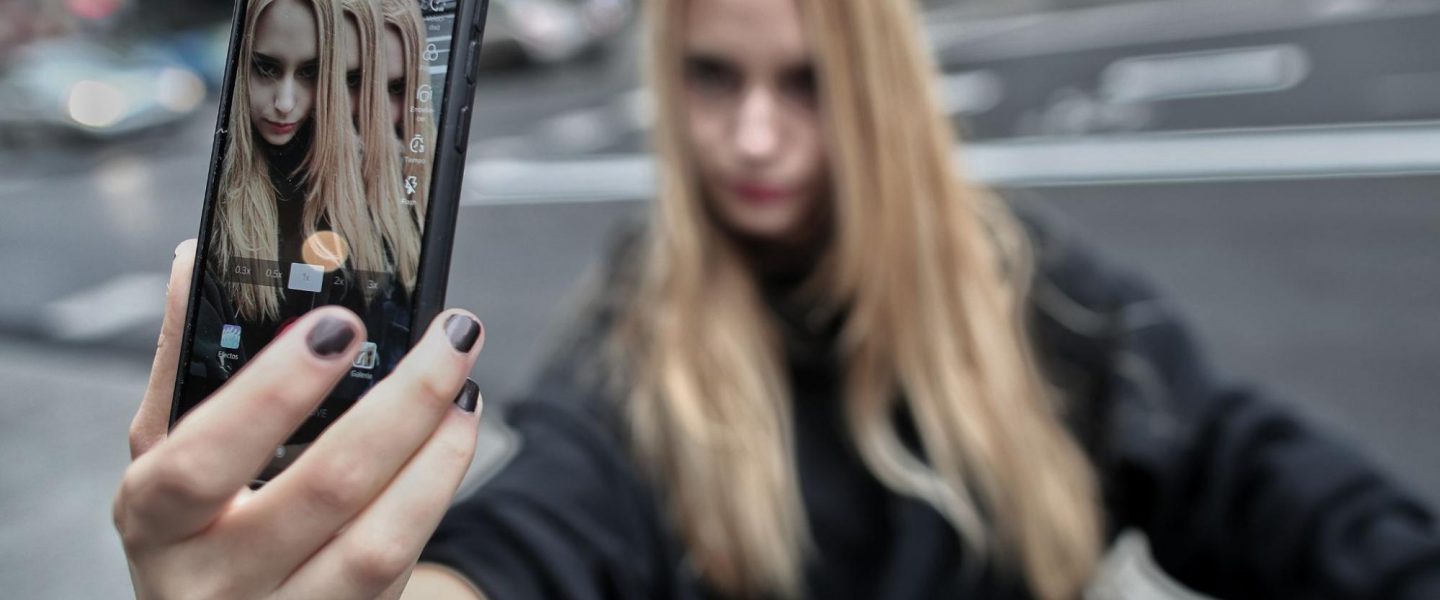Throughout history, social stresses manifested as strange afflictions, from dancing plagues to fainting spells. But now we may be seeing one that goes from tremors to saber-rattling.
A true story from the world of social media:
Last year, doctors in the US, UK, Canada, and Australia started seeing cases of teenage girls developing tics — spontaneous jerking motions and uttering meaningless phrases, or just the word “beans” in a British accent.
A few doctors, in Chicago, Germany, and elsewhere, traced the cause to TikTok; specifically, to a segment of TikTok where users share posts about their struggles with tics — including one British woman who utters the word “beans.”
Early signs pointed to a kind of social contagion, in which the stress and isolation of the pandemic seemed to make these tics communicable across the febrile medium of the app. Doctors are careful to say this isn’t proven by any stretch, but the great TikTok tic may well be an example of what’s called “functional neurologic disorder” (FND), in which sufferers have very real dysfunction in the brain that interferes with movement.
Like so much in the fields of psychology and neurology, it’s a hard condition to pin down. The National Institutes of Health are so circumspect as to be condescending: “Someone with FND can function normally, they just can’t at that moment.”
Yet the “beans” thing is a clue that what we’re seeing may be a “mass psychogenic event.” Once called “mass hysteria” — which was reductive and sexist, but not entirely incorrect in that these outbreaks of communal behavior tend historically to affect women — FND seems to be sort of the hip new term for “mass psychogenic illness.”
While no one’s conclusively saying this is what “beans” is, researchers are eager to dig into the possibility that there’s some confluence of society, media, and neurology at work here. But certainly — certainly! — nothing more nefarious at work.
Of course, these are just girls, the thinking goes. Media and medicine have no problem making the connection. It “makes sense,” historically speaking. But: People see what they want. So if this sort of thing happened to, you know, government agents, it would have to be something else that “makes sense” — something reasonable like, say, a super-secret death ray.
So the story goes.
A Fever to Burn Up the World
A friend of mine, Zhanna L. Malekos Smith, recently wrote a piece for The Hill that encapsulated the drama of Havana syndrome, which got me thinking about the TikTok tics and the very different ways we have interpreted the events.
Re Havana syndrome: I’m sure you’ve read something about it; it’s quite a saga. I’ll breeze through it, but if you want to know more, go nuts. Beginning in 2016, US embassy officials, first in Havana and then at other spots around the world, began experiencing weird symptoms: disorientation, vertigo, headaches. Some 200 cases followed, including near the White House. Could be gasoline generators, or maybe crickets, said one report.
The Journal of the American Medical Association said it might be some kind of brain injury, or maybe not, and the National Academy of Sciences admitted it wasn’t sure, but, yeah, why not, it could be caused by some sort of radio-frequency energy. Which of course quickly became, hey, maybe our enemies have a super-secret energy weapon.
The alleged weapon, the circumstances, the list of possible culprits: all Roger Moore-vintage, James Bond Cold War camp. Invisible fingers point to Cuba, China, Russia, maybe even back to the US.
Also on offer, from the beginning, was mass psychogenic illness from the stress, isolation, and distrust of embassy work in a hostile country. Why couldn’t the trigger be noises caused by all the nations, that endless and irritating chorus of nuclear-tipped crickets?
If true, this would not only be yet another example of mental health issues being sidelined in favor of other, crazier options, but it’d be possibly the first time a mass psychogenic illness may lead to international conflict.

Human Ingenuity in Pursuit of New Ailments
We’ll get to that, but first: more on mass psychogenic illness.
I’ve been fascinated for years by this thing that happened in Alsace in 1518: a “dancing plague” in which sufferers spontaneously danced in the streets of Strasbourg, hundreds of them, for a month. My interest in this no doubt stems from my family having Alsatian roots, so while some people can brag about their ancestors inventing the zero or democracy or tikka masala, this is what I’ve got.
Magistrates in Strasbourg decided the dancers suffered from “hot blood.” The cure? To dance more. They herded the great twerking crowd into guild halls, hired musicians, and forcefully encouraged the afflicted to shimmy their way to better health. According to reports of the time, maybe a dozen or more people died. The actual “cure” to the dancing plague ended up being no less absurd: It involved ushering the dancers to a local shrine and giving them all red shoes, in what may be history’s first instance of fashion therapy.
Strasbourg’s dancing plague happened during a time of many stresses that would fit neatly into a Pew public survey today: There were pandemics (bubonic plague), droughts, general distrust of authority (the Holy Roman Empire was corrupt in a money-grubbing, horny-priest kind of way). This was also a time of technological marvel: Gutenberg’s 1440 invention of the printing press birthed the Renaissance’s new information environment (the internet before the internet), and the Protestant Reformation was right around the corner.
The point is, pretty much wherever you see instances of mass psychogenic illness, you see certain underlying conditions: social unrest, political instability, inequality. And, too, a thread of technological upheaval, as Robert Baloh, a Professor of Neurology at UCLA, has chronicled.
Baloh writes that early telephone operators suffered “concussion-like symptoms attributed to ‘acoustic shock.’” The condition, as you may know, has since faded. After the advent of rail travel, survivors of accidents began to complain of physical and psychological ailments blamed on what became known as “railway spine.” Yet a London surgeon who found no spinal cord damage concluded it was caused by “fright.” And studies of “shell shock” from World War I turned out not to be soldiers disabled from the results of concussive explosions from new types of bombs, but physiological stress from… being in a war.
Sometimes, it’s just cultural stress, as a German harmonica player named Karl Röllig said in 1787 about the instrument: “Its tones could … make women faint; send a dog into convulsions; make a sleeping girl wake screaming through a chord of the diminished seventh, and even cause the death of one very young.”
From dancing plagues to the Salem Witch Trials to twitching girls in Le Roy, NY, the stories recur. Even the TikTok case has a precedent: In 2006, Portuguese teens by the hundreds came down with a peculiar ailment of rashes and breathing trouble… symptoms identical to those suffered by characters in a popular teen soap opera.
Not hard to spot those issues at work in Havana syndrome, too, as Baloh writes. “It started from a single undercover agent in Cuba — a person in what I imagine is a very stressful situation,” he offered. “This person had real symptoms, but blamed them on something mysterious — the strange sound he heard. He then told his colleagues at the embassy, and the idea spread. With the help of the media and medical community, the idea solidified and spread around the world. It checks all the boxes.”
A Hostile Geopolitical Immune Response
Though there is plenty of reason to seriously consider a psychogenic cause to Havana syndrome, and though many do, still that doesn’t seem to have slowed the epidemic of hawkish rhetoric coming out of US officials.
In 2017, then-Secretary of State Rex Tillerson called Havana syndrome “health attacks.”
But: People see what they want. In the Le Roy case, a doctor concluded it was an infectious disease. Environmental contamination crusader Erin Brockovich pronounced it environmental contamination.
Tillerson, a state actor, saw state actors. In the absence of proof, accusations. The Biden administration has demurred from declaring that incidents of Havana syndrome are the results of out-and-out aggression, instead calling them “anomalous health incidents.” But that’s only stirred up politicos like Rep. Michael McCaul (R-TX), who sponsored HR 4914, the Havana Syndrome Attacks Response Act.
He is unequivocal that Havana syndrome is the result of attacks by… somebody. In the text of the Havana Syndrome Attacks Response Act, the word “attack” is used 34 times. (Oh, 35 times, counting the name.)
Aggression is its own social contagion. And these are not meaningless phrases. Certainly not “beans.”
So, if it’s true that Havana syndrome is psychogenic, we can draw an extraordinary conclusion. It would represent a clear-cut case of “self-induced saber-rattling.” The stresses of international tension produce a debilitating condition in sufferers, the response to which is to further ratchet up international tensions.
Still, it could be dumber.
Lawmakers bluster over nefarious agents causing Havana syndrome but miss an obvious opportunity to name a threat in all this. Teen girls have, too, developed debilitating conditions as the direct result of TikTok use. TikTok is Chinese-owned. Therefore, China is using an energy-broadcasting weapon (the internet) to attack our children, and we’re not willing to do anything about it.
This is the tune. Onward we dance.



